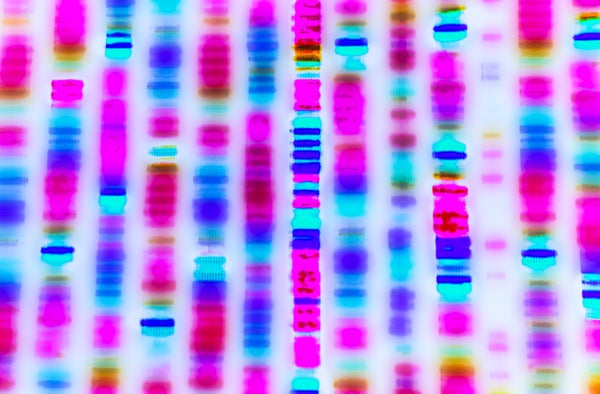This article was published in Scientific American’s former blog network and reflects the views of the author, not necessarily those of Scientific American
President Richard Nixon famously declared the war on cancer in 1971. For a long time, the United States was losing, but the tide has finally turned. The American Cancer Society recently reported the largest single-year reduction in cancer mortality ever—a 2.2 percent drop. Prevention—especially big declines in smoking—and advanced treatments targeting late stage cancers have been the cornerstones of the fight.
Still, more than 600,000 Americans will likely die of cancer this year, making it the nation’s second leading cause of death. It is time to open a new front in the war: better early detection.
Data from the National Cancer Institute shows that early detection accounted for less than 5 percent of the gains in mortality. When you look at the research dollars spent in this area, the finding isn’t so surprising. Only about 14 percent of the National Cancer Institute’s research budget goes to cancer detection and diagnosis research.
On supporting science journalism
If you're enjoying this article, consider supporting our award-winning journalism by subscribing. By purchasing a subscription you are helping to ensure the future of impactful stories about the discoveries and ideas shaping our world today.
And yet early detection can clearly have a huge benefit. A person whose cancer is found before it has spread to other parts of the body is more than four times as likely to survive five years than a person diagnosed with advanced disease. In patients with lung cancer, the difference is more than tenfold. Recent models suggest that shifting the stage of diagnosis from metastatic to localized cancers could potentially reduce five-year cancer-related mortality by up to 24 percent in people aged 50–79 years old.
Our problem is the way we screen. Current detection methods focus exclusively on the five most prevalent cancers: breast, prostate, cervical, colon and lung. Adherence to the guidelines developed by the United States Preventive Services Task Force (USPSTF) is low, in part because screening can be costly, invasive and difficult to access. (Who doesn’t remember their first colonoscopy?)
In addition, the number of false positives is unacceptable. If everyone in the U.S. aged 50 to 79 complied with the screening recommendations for these five cancer types, we would find roughly 209,000 instances of disease each year—but at a cost of 8.5 million false positive test results. That equates to approximately 41 false positives for every one true cancer case detected. The unnecessary emotional distress and financial waste are immense.
We need to shift from screening for individual cancers to screening individuals for all cancers. Indeed, the five cancer types with screening recommendations represent less than 50 percent of the cancers in individuals 50 to 79 years of age. We estimate, based on epidemiological data, that 80 percent of cancer deaths are attributable to cancers with no available early detection tests. In fact, an individual seeking a guideline-recommended single-cancer screening test would be two to 80 times more likely to have a completely different cancer—i.e., not the one not being screened.
But help may be on the way. A single blood-based multicancer test that detects any cancer type and identifies the location of the tumor in the body could discover cancers earlier and more broadly than current screening methods. Such technology is under development by a handful of companies, and it relies on the fact that tumors shed small quantities of DNA into the bloodstream. The circulating tumor DNA bears distinctive signatures that distinguish it from normal genetic material and also point to the part of the body where the tumor is located. This molecular discovery of cancer is distinct from imaging tools commonly used today, and leverages all we know about the biology of cancer, using cutting-edge machine-learning data science. In fact, such developments could be the first byproduct of the Human Genome Project that can be applied to a broad population and a significant public health challenge.
Although these new multicancer early detection tests may still produce some false positive results, recent data show they may be far less common compared with current screening methods. Findings from one company, GRAIL (I have served as an advisor for a company that advises GRAIL), suggest that multicancer tests may be able to detect more than 50 early types of cancers across stages, at a single false positive rate of less than 1 percent. Validating studies that will be a key step toward commercialization are being published now.
Tests such as these have the potential to shift diagnoses to a time before a cancer has started to spread. The potential benefits are clear. Some modeling suggests early detection could avert as many deaths as everything else we are currently doing to prevent, detect and treat cancer in the US.
The real question will be whether the American health system will adopt these novel blood tests. Prior cancer detection tests took decades to study and adopt. Medicare, or private insurers, might consider putting the tests in the hands of general practitioners, who generally don’t treat cancer, as a way to find cancers early when they are most treatable and potentially curable.
We also need to move quickly away from paying for cancer care indiscriminately to value-driven reimbursement. This will avoid unnecessary care for people who, while diagnosed early, would benefit from less intensive strategies such as active surveillance for prostate cancer.
As we transition the U.S. health care system away from a fix-it-after-it-breaks system to one focused on predicting, preventing and detecting early disease, novel genomic approaches could provide a potent new weapon. The challenge will be to marshal these resources in a new war on cancer.
